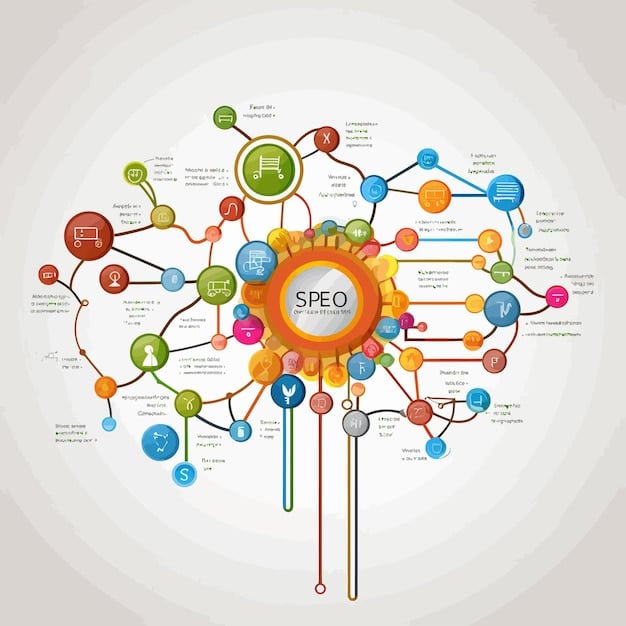Visual vs. Auditory Memory: Which Learning Style Wins?

Understanding the difference between visual and auditory memory techniques is crucial for optimizing learning strategies, as each caters to different cognitive strengths and learning styles, ultimately enhancing memory retention and recall.
Are you struggling to remember information? The **Comparison Analysis: Visual vs. Auditory Memory Techniques – Which One Works Best for Your Learning Style?** can be a game-changer. Understanding how you best process information can unlock powerful study strategies.
Understanding Visual and Auditory Memory
Many individuals possess different learning styles, and recognizing which style resonates with you is crucial for optimizing the way you absorb and retain information. Visual and auditory memory are two primary learning styles, each relying on different sensory inputs to encode and recall information.
Understanding these memory techniques is the first step to enhancing your learning potential. Let’s explore each type of memory and how they can be leveraged effectively.
What is Visual Memory?
Visual memory involves recalling information based on what you see. This could include images, diagrams, written words, or any visual cues that help you remember specific details. People with strong visual memory often find it easier to remember faces, read maps, or understand complex layouts.
What is Auditory Memory?
Auditory memory, on the other hand, involves remembering information through sounds. This could include spoken words, music, environmental noises, or any auditory cues that help you recall specific details. People with strong auditory memory often find it easier to remember melodies, follow verbal instructions, or learn new languages.
- Techniques for Visual Learners: Mind mapping, flashcards with images, and using color-coded notes.
- Techniques for Auditory Learners: Recording lectures, participating in discussions, and using mnemonic devices that rhyme.
- Benefits of Knowing Your Style: Tailoring your study habits to maximize retention and recall.
By understanding the fundamental differences between visual and auditory memory, you can begin to explore which techniques work best for you.

Techniques to Enhance Visual Memory
Visual memory techniques can be highly effective for individuals who learn best by seeing. These techniques focus on creating strong visual associations that aid in recall. If you lean towards visual learning, consider incorporating these strategies into your study routine.
By using visual memory techniques, you’re essentially turning information into memorable images and patterns which can stick with you more effectively.
Mind Mapping
Mind mapping is a visual organization tool that helps structure information in a hierarchical and intuitive format. Start with a central idea and branch out with related concepts, using images, symbols, and colors to create a visually stimulating map. This can help you see the connections between different pieces of information and improve recall.
Flashcards with Images
Traditional flashcards can be enhanced by adding images and diagrams. For example, when studying historical figures, include a portrait alongside their name and key achievements. Visual cues can significantly improve your ability to remember facts and details.
- Color-Coding: Use different colors to categorize information, making it easier to visually distinguish between topics.
- Spatial Arrangement: Organize your notes in a way that is visually appealing and easy to navigate.
- Visualization Exercises: Practice mentally visualizing concepts or processes to strengthen your visual memory.
Regularly practicing these visual memory techniques can dramatically improve your ability to recall information and perform better academically or professionally.
Strategies to Improve Auditory Memory
Auditory memory techniques are designed to help individuals who learn best by listening. If you tend to remember information better when you hear it, these strategies can be particularly beneficial. These strategies emphasize the power of sound and rhythm in memory retention.
Actively listening and engaging with auditory techniques can lead to significant improvements in your memory capabilities.
Recording Lectures and Notes
Recording lectures allows you to revisit the material at your own pace and reinforce your understanding. Listening to the recording multiple times can help solidify the information in your memory. Similarly, record yourself reading your notes aloud and listen to them later.
Participating in Discussions
Verbalizing and discussing concepts with others can enhance your auditory memory. Explaining ideas aloud and hearing different perspectives can help you internalize the information more effectively. This also engages your active listening skills.
- Mnemonic Devices: Use rhymes, songs, or jingles to remember key facts and concepts.
- Verbal Repetition: Repeat information aloud to reinforce it in your memory.
- Active Listening: Pay close attention during lectures or discussions, focusing on the sounds and rhythms of the speaker’s voice.
Implementing these auditory memory strategies into your daily study habits can yield substantial gains in your ability to recall information.

Combining Visual and Auditory Techniques for Enhanced Learning
While understanding your preferred learning style is valuable, combining visual and auditory techniques can lead to even greater memory retention and a more holistic learning experience. This approach caters to multiple cognitive strengths, providing a more robust and flexible foundation for memory.
By integrating both visual and auditory elements, you can create a synergistic effect that enhances overall learning efficiency.
Visual Aids with Verbal Explanations
When using visual aids like diagrams or mind maps, accompany them with verbal explanations. Explain the concepts aloud as you review the visual material. This links the visual and auditory pathways in your brain, reinforcing the information.
Multimedia Learning
Incorporate multimedia resources such as videos, podcasts, and interactive simulations into your study routine. Videos provide both visual and auditory stimulation, while podcasts offer the flexibility of learning on the go. Interactive simulations allow you to actively engage with the material in a multimodal way.
- Dual Coding Theory: This theory suggests that using both visual and verbal cues enhances memory because information is stored in two ways rather than one.
- Personalized Learning: Experiment with different combinations of techniques to find the optimal balance that works for you.
- Consistency: Regularly practice combined techniques to strengthen neural connections and memory pathways.
Blending visual and auditory techniques can result in a more comprehensive and effective approach to learning, leading to better retention and recall.
Assessing Your Learning Style: Visual or Auditory?
Determining whether you are primarily a visual or auditory learner involves careful self-assessment and experimentation with different learning techniques. Understanding your learning style allows you to tailor your study habits and maximize your learning potential.
The process of assessing your learning style is a journey of self-discovery that can lead to more effective and efficient learning strategies.
Self-Assessment Questionnaires
Several online questionnaires and assessments can help you identify your dominant learning style. These questionnaires typically present a series of scenarios or preferences and analyze your responses to determine whether you lean towards visual, auditory, or kinesthetic learning.
Experimenting with Techniques
Try incorporating different visual and auditory techniques into your study routine and observe which ones yield the best results. Do you find it easier to remember information when you create mind maps or when you listen to lectures? Track your progress and identify patterns that indicate your preferred learning style.
- Observe Your Preferences: Pay attention to the types of learning activities you naturally gravitate towards.
- Seek Feedback: Ask teachers, mentors, or peers for feedback on your learning habits and strengths.
- Be Open to Change: Your learning style may evolve over time, so be open to reassessing and adjusting your techniques as needed.
By actively assessing your learning style and experimenting with different techniques, you can gain valuable insights into how you learn best and optimize your study habits accordingly.
Real-Life Applications and Examples
The principles of visual and auditory memory techniques can be applied in various real-life scenarios to enhance learning and memory retention. From academic pursuits to professional development, these techniques offer practical tools for improving your ability to recall and utilize information.
Understanding how to apply these memory strategies in real-world contexts can significantly enhance your overall learning experience and effectiveness.
Academic Success
Students can use visual memory techniques like mind mapping and flashcards to prepare for exams and retain information more effectively. Auditory learners can benefit from recording lectures and participating in study groups where they can verbally discuss concepts. Combining both approaches can lead to even greater academic success.
Professional Development
Professionals can use visual and auditory memory techniques to enhance their training and development. For example, visual presentations can be more engaging if accompanied by clear verbal explanations. Recording meetings and reviewing them later can help reinforce key decisions and action items.
- Language Learning: Visual aids like pictures and diagrams can help associate words with their meanings, while auditory techniques like listening to native speakers can improve pronunciation and comprehension.
- Skill Acquisition: Visualizing the steps involved in a task and verbally rehearsing them can enhance your ability to learn and perform new skills.
- Everyday Memory: Use visual cues like placing objects in strategic locations to remember tasks, and use auditory reminders like setting alarms or verbalizing your to-do list.
By applying visual and auditory memory techniques in real-life situations, you can enhance your learning and memory capabilities, leading to greater success in both academic and professional endeavors.
| Key Concept | Brief Description |
|---|---|
| 🧠 Visual Memory | Recalling information through images, diagrams, and visual cues. |
| 🎧 Auditory Memory | Remembering information through sounds, spoken words, and auditory cues. |
| 🎨 Mind Mapping | A visual tool to structure information with images and colors. |
| 🗣️ Active Listening | Paying close attention to sounds and verbal cues to enhance memory. |
Frequently Asked Questions
▼
Visual memory relies on recalling information through images and visual cues, while auditory memory involves remembering information through sounds and verbal cues. Each engages different parts of the brain.
▼
You can identify your learning style through online questionnaires, self-assessment, and experimenting with different learning techniques. Observe which methods yield the best results for you.
▼
No, combining visual and auditory techniques can enhance learning and memory retention. This multimodal approach caters to different cognitive strengths and provides a more robust foundation for memory.
▼
Effective visual memory techniques include mind mapping, using flashcards with images, color-coding notes, and practicing visualization exercises to strengthen visual associations.
▼
Auditory learners can improve their memory by recording lectures, participating in discussions, using mnemonic devices, practicing verbal repetition, and actively listening during learning activities.
Conclusion
In conclusion, understanding and leveraging your preferred learning style, whether visual or auditory, can significantly enhance your memory and learning outcomes. Experiment with different techniques and combinations to find what works best for you, and remember that a multimodal approach can often yield the most comprehensive and effective results.





